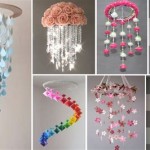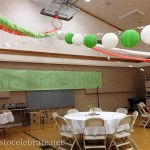Decorating Your Living Room For Easter
Easter offers an opportunity to infuse a living room with the freshness of spring and the celebratory spirit of the holiday. The transition from winter's somber tones to Easter's vibrant hues can significantly uplift the atmosphere of the space, making it welcoming for family gatherings and personal enjoyment. This article provides a comprehensive guide to decorating a living room for Easter, focusing on key elements that contribute to a festive and aesthetically pleasing environment.
Effective Easter decorating involves careful consideration of color palettes, thematic elements, and the existing decor of the room. A harmonious blend of these factors ensures a cohesive and visually appealing result. Moreover, incorporating elements that reflect personal preferences and create a sense of warmth and joy is paramount.
Choosing an Easter Color Palette
The selection of a color palette is the fundamental step in establishing the desired mood for an Easter-decorated living room. While traditional Easter colors like pastel pink, lavender, pale yellow, and mint green are perennial favorites, they are not the only options available. Modern interpretations often incorporate brighter, bolder hues or a more muted, sophisticated approach.
Pastel palettes create a gentle and airy ambiance, evoking the feeling of springtime blossoms. These colors work exceptionally well in rooms with ample natural light. Consider using pastel shades for throw pillows, blankets, floral arrangements, and decorative accents. Complementing pastels with neutral tones like white, cream, or light gray will prevent the space from feeling overly saccharine.
For those who prefer a more vibrant and energetic aesthetic, consider incorporating jewel tones like emerald green, sapphire blue, or amethyst purple. These colors add depth and richness to the room, especially when paired with metallic accents like gold or silver. Use jewel tones sparingly, perhaps in a statement vase, a patterned rug, or a piece of artwork.
Alternatively, a minimalist approach can be equally effective. A neutral color palette, such as shades of white, beige, and gray, can serve as a blank canvas for subtle Easter accents. Introduce pops of color through floral arrangements, Easter eggs, or a single brightly colored cushion. This understated elegance is particularly well-suited to contemporary living spaces.
When selecting a color palette, it is crucial to consider the existing colors of the room. Harmonizing the Easter decorations with the permanent features of the space, such as the walls, furniture, and flooring, will create a cohesive and visually pleasing result. Avoid clashing colors that can create a jarring effect.
Incorporating Thematic Easter Decor
Thematic elements are essential for communicating the Easter spirit within the living room. These elements can range from traditional symbols like Easter eggs and bunnies to more contemporary and abstract interpretations. The key is to incorporate these themes in a tasteful and balanced manner.
Easter eggs are a ubiquitous symbol of the holiday. They can be incorporated in various ways, from traditional painted eggs displayed in a decorative bowl to more elaborate arrangements featuring faux eggs made of glass, ceramic, or wood. Consider varying the size, color, and texture of the eggs to create visual interest.
Bunny figurines are another popular choice for Easter decor. These can range from whimsical and cartoonish designs to more elegant and realistic sculptures. Place bunny figurines on shelves, coffee tables, or mantelpieces to add a touch of Easter charm.
Floral arrangements are integral to Easter decorating, symbolizing the rebirth and renewal associated with spring. Choose flowers that are in season, such as tulips, daffodils, hyacinths, and lilies. Arrange them in vases, baskets, or even vintage watering cans to create a visually appealing display. Consider incorporating greenery like eucalyptus or ferns to add texture and depth.
Wreaths are a versatile decorating element that can be hung on the front door, above the fireplace, or on an interior wall. Create an Easter-themed wreath using elements like twigs, flowers, Easter eggs, and ribbons. A grapevine wreath adorned with pastel-colored eggs and silk flowers can add a touch of rustic charm.
Garlands are another way to add a festive touch to the living room. Drape a garland across the mantelpiece, along a bookshelf, or over a doorway. Easter-themed garlands can be made from felt, paper, or fabric, and can feature elements like bunnies, eggs, chicks, and flowers.
Consider incorporating themed throw pillows and blankets. Look for patterns featuring Easter motifs like bunnies, eggs, or floral designs. Pastel-colored throws and pillows can add a soft and cozy touch to the room.
Creating a Focal Point
Establishing a focal point is crucial for drawing the eye and creating a sense of balance within the living room. This could be a fireplace mantel, a coffee table, or a prominent piece of furniture. Concentrating the Easter decorations around this focal point will create a visually impactful display.
If the living room has a fireplace, the mantelpiece is an ideal focal point for Easter decorations. Arrange floral arrangements, bunny figurines, and Easter eggs along the mantel. Consider adding a garland or a banner for extra impact. A strategically placed mirror above the mantel can reflect the decorations and create a sense of depth.
The coffee table is another excellent focal point. Style the coffee table with a tray or centerpiece featuring Easter-themed decorations. This could include a bowl filled with Easter eggs, a vase of flowers, or a collection of bunny figurines. Add books or magazines to create a layered and visually appealing display.
A large piece of furniture, such as a sofa or a bookcase, can also serve as a focal point. Drape a pastel-colored throw blanket over the sofa and add Easter-themed throw pillows. Arrange bunny figurines or floral arrangements on the shelves of the bookcase.
Consider using lighting to highlight the focal point. Place a spotlight on the mantelpiece or use candles to create a warm and inviting ambiance. String lights can also be used to add a festive touch.
Ensure that the focal point is not cluttered or overwhelming. The goal is to create a visually appealing display that draws the eye without feeling chaotic. Edit the decorations carefully and remove any items that detract from the overall aesthetic.
Furthermore, personalizing the Easter decorations adds a unique touch to the living room. Incorporating handcrafted items, family heirlooms, or DIY projects can make the space feel more personal and meaningful. These personalized touches can spark conversation and create lasting memories.
Maintaining a balance between Easter decorations and the existing decor of the living room is vital. Avoid overcrowding the space with excessive decorations, which can make it feel cluttered and overwhelming. Instead, choose a few key pieces that complement the existing decor and enhance the overall aesthetic.
Ultimately, decorating a living room for Easter is about celebrating the joy and renewal of springtime. By carefully considering the color palette, incorporating thematic elements, and creating a focal point, one can transform the living room into a festive and welcoming space for family and friends.

5 Easter Decor Ideas To Light Up Your Home Designcafe

5 Easter Decor Ideas To Light Up Your Home Designcafe

Easy Easter Decorating Ideas For Your Living Room Bluesky At Home

5 Easter Decor Ideas To Light Up Your Home Designcafe

Easter Decorating Ideas Google Search Spring Decor Contemporary Holiday Pottery Barn

Tips To Help You Decorate For Spring Or Easter Anderson Grant

Easter Themed Décor Like This Unique Fl Centerpiece Down To Earth Living Garden Center Plant Nursery Outdoor And Patio Furniture

Easter Decorating Ideas Home Bunch Interior Design

5 Easy Ideas For Easter Decor In Your Home Bluesky At

25 Easter Ideas Tablescaping Decorating And Crafting
Related Posts







